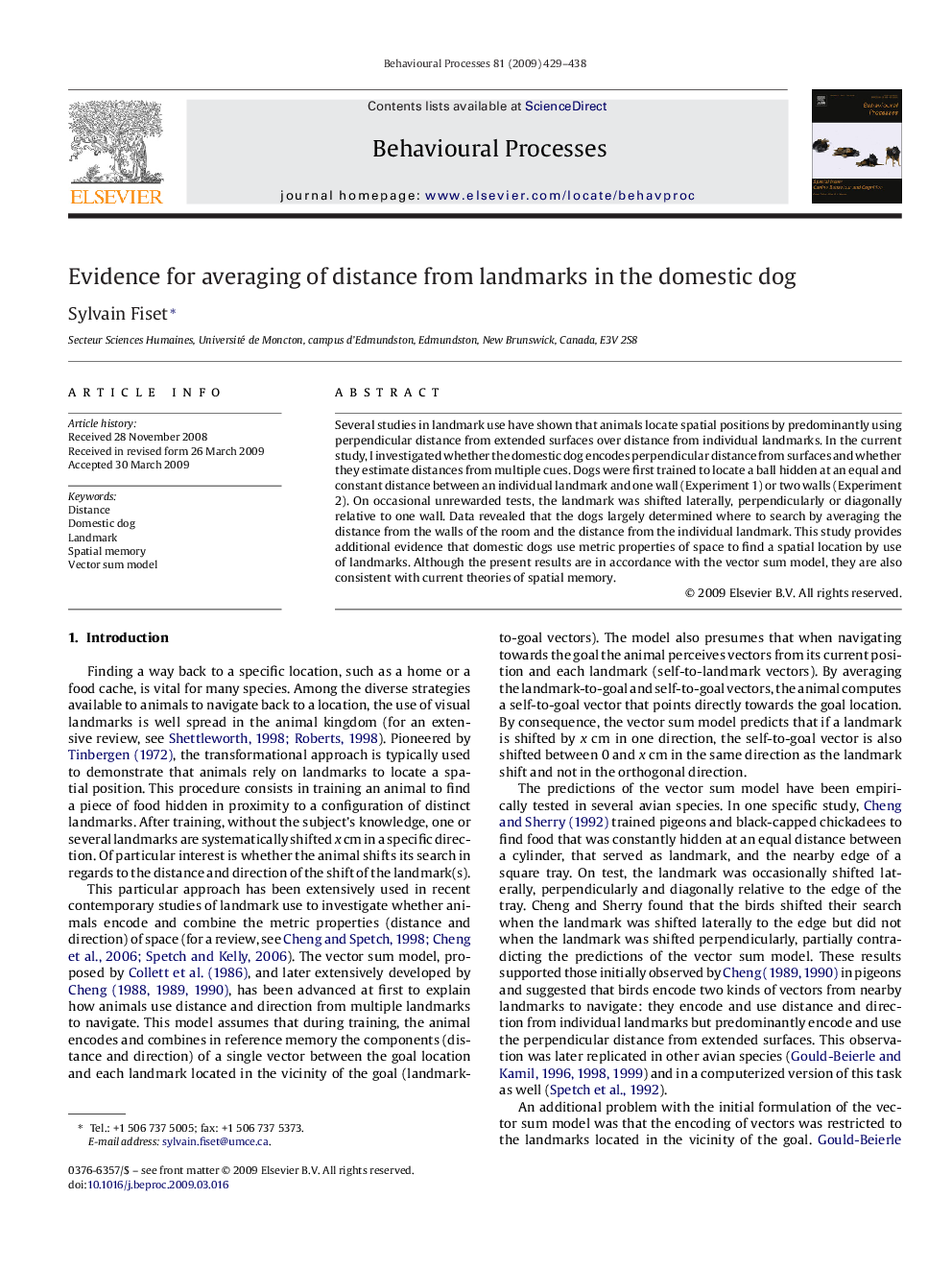| Article ID | Journal | Published Year | Pages | File Type |
|---|---|---|---|---|
| 2427493 | Behavioural Processes | 2009 | 10 Pages |
Several studies in landmark use have shown that animals locate spatial positions by predominantly using perpendicular distance from extended surfaces over distance from individual landmarks. In the current study, I investigated whether the domestic dog encodes perpendicular distance from surfaces and whether they estimate distances from multiple cues. Dogs were first trained to locate a ball hidden at an equal and constant distance between an individual landmark and one wall (Experiment 1) or two walls (Experiment 2). On occasional unrewarded tests, the landmark was shifted laterally, perpendicularly or diagonally relative to one wall. Data revealed that the dogs largely determined where to search by averaging the distance from the walls of the room and the distance from the individual landmark. This study provides additional evidence that domestic dogs use metric properties of space to find a spatial location by use of landmarks. Although the present results are in accordance with the vector sum model, they are also consistent with current theories of spatial memory.
